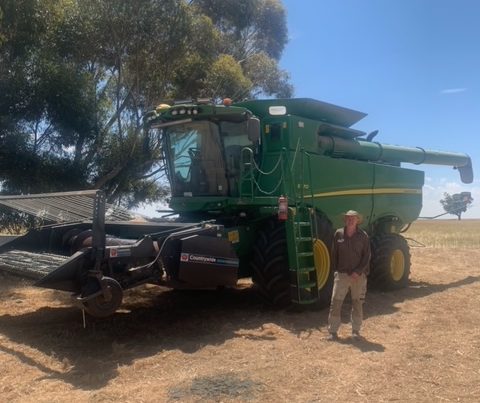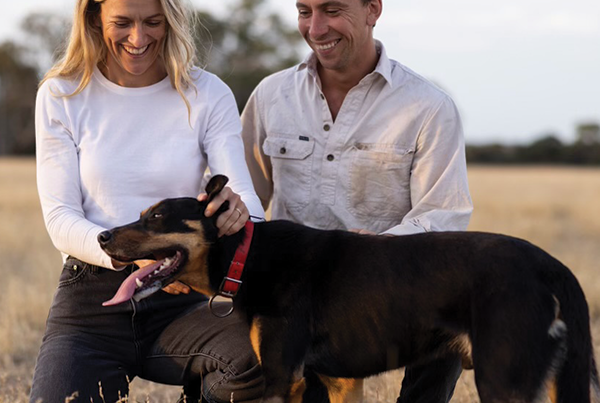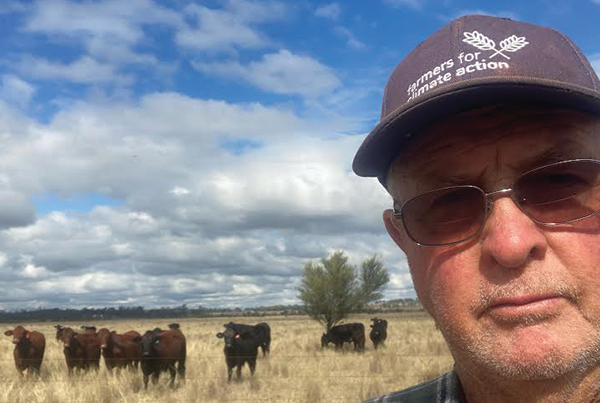
At a glance
Who: Celia Leverton
What: 6.25ha, beef, regenerative grazing, demonstration and teaching site
Where: Franklin, Huon Valley, Tasmania
Can you tell us about your property?
Farming has always been my raison d’etre.
My background over the last 45 years has been in farming in some form. From jillarooing, woolclassing, on-farm rural business management and rural journalism to dairy, sheep and beef farming, pastured poultry and market gardening.
While it wasn’t in my life plan to end up on a small farm, it has given me the opportunity to test farming methods with no risk to our livelihood.
I was drawn to permaculture after farming conventionally for many years and seeing the sad lack of people who care when there is high debt and pressure to produce at any cost. The permaculture ethics of care of the planet, care of the people and a fair share for all appealed to me.
For the last 16 years, my children and I have run a profitable mixed small hill farm south of Franklin in the Huon Valley. Our income has been from market gardening and pastured eggs, with a sidekick of permaculture designing and teaching, community projects and in the last few years, running regenerative farming training and conferences with the Regenerative Agriculture Network Tasmania (RANT).
I currently run a handful of beef cattle, adjusting numbers if it looks like there is an excess or lack of feed to reach the next growing season. I manage the cattle with high stock density, high utilisation and long recoveries. I worked out the optimum paddock rest period by trialling areas with various recovery periods between grazings, choosing the time that resulted in the establishment of perennial grasses, decomposing litter on the soil surface between the perennial grass bases, and animal performance.
My children are now milking over 900 jerseys with their father in the north of the state, using biological inputs and participating in regenerative farming training.
What first got you thinking about climate change?
We have been quite insular from the effects of drought and weather extremes in our valley (reliable 720-780mm) and in many parts of Tasmania (bar the east coast and midlands).
While outside farm inputs have been impacted on my farm, it was the reporting of challenges being experienced in vulnerable parts of the world that first got my attention. I am particularly concerned about the potential for food and water insecurity and lawlessness, and its catastrophic impact already being felt by families in some areas.
Reading Allan Savory’s work (Holistic Management International) on how to reverse desertification was the start of my path to regenerative agriculture and practice change.
How has climate change impacted on your farm business?
The drought on the mainland forced the price of grain to a level that made the pastured egg business financially unviable. This was a major issue for a small, steep property where options for generating income are limited.
What are some of the climate-smart strategies you’ve been employing and how successful have they been?
I’ve adopted regenerative grazing practices that lead to higher water infiltration and moisture holding capacity in the soil. Water infiltration tests have shown a dramatic improvement in the effectiveness of water soaking in. Paddocks that were ploughed 3 years ago didn’t infiltrate any water after 6 minutes, a set stocked paddock with good ground cover took 4.75 minutes, and the regeneratively grazed paddock took 17 seconds to infiltrate the same amount of water. Swales that used to fill after 10mm rain, now don’t hold any after 70mm. It all infiltrates where it lands.
The paddocks have never looked healthier. Wallaby numbers were very high and weeds were out of control from the constant grazing pressure. The wallaby numbers have been dramatically reduced by culling and fencing, and with the regenerative grazing regime of high stock density and utilisation and long recoveries, the weeds have disappeared, annual grasses have reduced and perennial grasses have increased.
The gardens and orchards receive home grown compost, are heavily mulched and we use no dig methods. Animals are integrated throughout all growing areas.
Part of my business model now includes project managing for RANT. The group was formed from a community forum in the Huon Valley to develop community action on climate change. We realised we needed a broader outlook than our immediate community, so ran a national conference in the next few months. We now run regular farmer training. While our large projects are still state-wide, we are now establishing smaller, localised hubs to build communities of practice around regenerative farming operations.
Do you use renewable energy on your farm? What are the benefits?
I have 6kW of solar panels for the house and shed use, electric fencing and moving water uphill to the gravity fed system.






